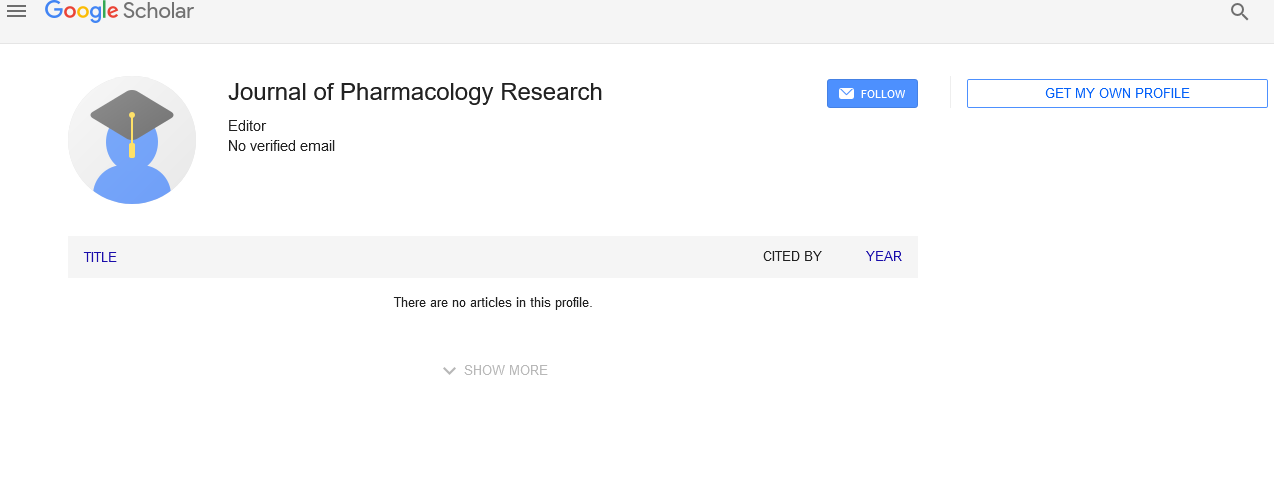A Study note on Antibiotic amoxicillin
Received: 01-Oct-2021 Accepted Date: Oct 14, 2021; Published: 21-Oct-2021
Citation: Pallavi. A study note on antibiotic amoxicillin. J Phram Res. 2021; 4(5) 5.
This open-access article is distributed under the terms of the Creative Commons Attribution Non-Commercial License (CC BY-NC) (http://creativecommons.org/licenses/by-nc/4.0/), which permits reuse, distribution and reproduction of the article, provided that the original work is properly cited and the reuse is restricted to noncommercial purposes. For commercial reuse, contact reprints@pulsus.com
Description
Antibiotic amoxicillin is used to treat a variety of bacterial illnesses. Infections of the middle ear, strep throat, pneumonia, skin infections, and urinary tract infections are only a few of them. It's usually taken by mouth, but it's also given as an injection. Nausea and redness are two common side effects. It may also raise the risk of yeast infections and diarrhea, especially when used with clavulanic acid. It is not recommended for people who are allergic to penicillin. While it is safe to use in those who have kidney difficulties, the dose may need to be reduced. It does not appear to be dangerous when used during pregnancy or breastfeeding. Amoxicillin belongs to the beta-lactam antibiotic family. In children, it is one of the most regularly administered antibiotics. Amoxicillin is a generic antibiotic that is widely available. With over 25 million prescriptions written in 2019, it was the 23rd most widely prescribed drug in the United States.
Medical uses
Acute otitis media, streptococcal pharyngitis, pneumonia, skin infections, urinary tract infections, Salmonella infections, Lyme disease, and chlamydia infections are among the infections treated with amoxicillin.
Adverse effects
Nausea, vomiting, rashes, and antibiotic-associated colitis are among the side effects, which are comparable to those seen with other -lactam antibiotics. Diarrhea (loose bowel movements) is also a possibility. Mental changes, lightheadedness, insomnia, disorientation, anxiety, sensitivity to lights and sounds, and imprecise thinking are all rare side effects. The first signs of these side effects demand immediate medical attention. An allergic response to amoxicillin can happen suddenly and without warning, so seek emergency medical help as soon as possible. A change in mental state, skin rash with acute itching (typically beginning in the fingertips and around the groyne area and rapidly spreading), and fever, nausea, and vomiting are all common symptoms of such a reaction. Any other symptoms that sound suspicious in the least should be addressed extremely seriously. Milder allergic symptoms, such as a rash, might appear at any moment during therapy, even up to a week after it is over. Anaphylaxis, which occurs in some persons who are allergic to amoxicillin, can be fatal. Some patients have developed drug-induced immunoallergic-type hepatitis after using the amoxicillin/clavulanic acid combination for more than one week. Lethargy, vomiting, and renal failure were observed in young children who had consumed acute amoxicillin overdoses. Clinical trials using amoxicillin have a poor record of side effects. As a result, the severity and frequency of amoxicillin side effects are likely to be higher than those described in clinical trials.
Non-allergic rash
Between 3% and 10% of children on amoxicillin (or ampicillin) develop a late-developing (>72 hours after starting medication and having never taken a penicillin-like medicine before) rash known as the "amoxicillin rash." Adults can have the rash, and it's possible that it's part of the DRESS condition. The rash is defined as maculopapular or morbilliform (measleslike), and it is referred to as "amoxicillin-induced morbilliform rash" in medical literature. It begins on the trunk and can quickly spread. This rash is unlikely to represent an allergic reaction, and it should not prevent you from taking amoxicillin in the future. It is imperative that the regimen be terminated. However, people can't tell the difference between a typical amoxicillin rash and a serious allergic reaction, thus a healthcare professional is often needed to tell the difference. An amoxicillin rash that isn't allergic could be a sign of infectious mononucleosis. According to some research, 80-90 percent of patients treated with amoxicillin or ampicillin for an acute Epstein Barr virus infection develop a rash.





